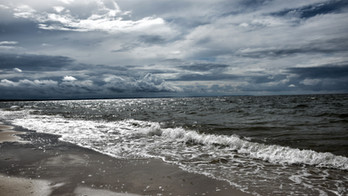
Rock Fishing Safety
सुरक्षा तथ्यपत्र #
19
Overview
Rock fishing is arguably one of the most dangerous sports and hobbies in Australia. Every year a disproportionate number of people are killed while rock fishing. Rock fishing is undertaken in a number of locations with small and large rock formations.
While rock fishing can be a dangerous activity, there are a number of key safety tips you can follow to ensure you stay safe and remember your day on the water for all the right reasons. This also applies if you are collecting abalone, oysters or other creatures off the rocks.
In response to the high numbers of drowning deaths, a coronial inquest (2015) recommended mandatory and enforced lifejacket usage which led to compulsory lifejacket usage being trialled within high risk local government areas in NSW . In NSW, the Rock Fishing Safety Act 2016 was passed to support this recommendation and legislates it compulsory for anyone participating in rock fishing within a declared area, including children, to wear an appropriate lifejacket.
Stay alert to the weather conditions
Always check the weather, severe weather warningslaunch, coastal waters forecastlaunch and tide predictionslaunch before you leave home and watch them while you're out fishing. DO NOT rock fish when conditions are dangerous.
Never turn your back on the ocean
Always watch the wavesHigh tides can cover your rock fishing spot with waterRising tides and high tides make waves break onto rock fishing locationsYou might get trapped or swept off your rock fishing spot by a high tide and or large wavesLarge seas or swell waves can be hazardousStrong winds can create hazardous waves or push you off wet, slippery rocksIf you are fishing in an exposed area during rough seas, find a calmer spotWatch the weather and tidal conditions while you're out fishing and be alert to any changes
Learn how to swim
Learn how to swim so you have the best chance of surviving if you get washed into the water. Find a swim school near you via Royal Life Saving
Choose the safest location
Always check and understand the weather conditions and tides before you leave home. This will help you to choose the safest possible location to go fishing.Ask local people and experienced anglers (rod and line fishers) about the safest areas to fish.Look out for Angel Ring locations. Angel Rings are lifebuoys installed at popular rock fishing spots across NSW. Angel Rings can keep a person afloat and away from the rocks until help arrives.Example of an Angel Ring secured at a popular rock fishing locationTake your time to observe the weather and tide conditions. Spend at least 30 mins watching the wind and wave action before choosing a safe location.Think about what your fishing spot might be like in a few hours if the weather and tides change.Plan an escape route in case you get washed into the water.
Wear the right gear
Always make sure you are wearing the right safety gear when you go rock fishing. Wearing the right gear can stop you from slipping into the water and can save your life.
Always wear a lifejacket
Under the NSW Rock Fishing Safety Act 2016, by law you and anyone helping you fish, including children, must wear an appropriate lifejacket in declared high risk areas. Make sure you read the Rock fishing lifejacket law and declared areas when planning your tripWear an appropriate lifejacket that is best for you
Always wear appropriate footwear with non-slip soles or cleats.
Rock plates or cleats are essential on wet, weedy rocksAlways wear lightweight clothing. Together with your lifejacket, lightweight clothing will weigh you down less
Never fish alone
No place is perfectly safe for rock fishing.Only Fish with other people and in places where experienced anglers go to fishAlways tell someone who is not going fishing with you where you plan to go
Related Items
Explore deeper into our campaign messages to learn more

